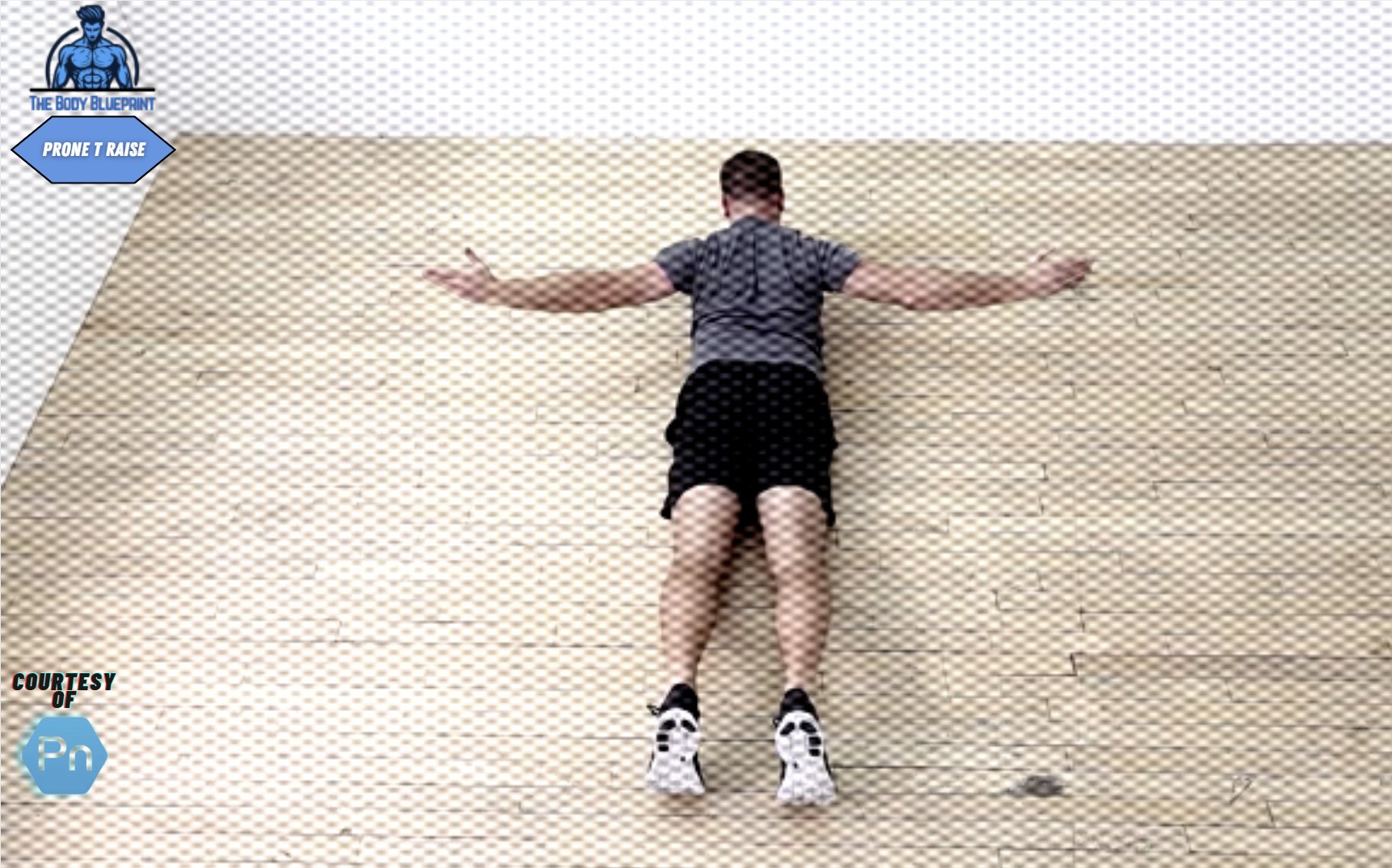You ever feel like your shoulders could use a little extra firepower? Maybe your posture’s been slipping, or those lateral raises aren’t cutting it anymore. Enter the Prone T Raise—a deceptively simple move that targets your traps, rear delts, and rhomboids while sharpening your posture like a knife.
We’re diving headfirst into this unsung hero of upper-body training, breaking it down in a way that’ll have you nailing the form, squeezing the gains, and walking out of the gym looking like a human action figure.
What Is a Prone T Raise, and Why Should You Care?
This is no ordinary shoulder exercise. The Prone T Raise is a bodyweight (or lightweight) movement that zeroes in on your mid-back and shoulders. It’s called a “T Raise” because your body forms a T-shape when your arms extend out. This move isn’t about stacking plates—it’s about precision.
Why It Belongs in Your Arsenal
- Builds Bulletproof Shoulders: It hits the rear delts and traps like a heat-seeking missile, ensuring balanced shoulder development.
- Improves Posture: Spends all day hunched over a desk? This move counteracts that desk-gremlin posture.
- Strengthens Stabilizers: Essential for bigger lifts like rows, deadlifts, and presses.
- Injury Prevention: Keeps your shoulders stable and functional for the long haul.
Performing a Prone T Raise Like a Pro
Here’s how to crush it with proper form:
Step-by-Step Instructions
- Setup:
- Lay face down on a bench or a mat.
- Keep your arms hanging down, palms facing inward.
- Position:
- Squeeze your glutes to stabilize your lower back.
- Engage your core to keep your torso steady.
- Raise:
- Extend your arms out to the sides, forming a T.
- Keep your thumbs pointing up toward the ceiling.
- Squeeze:
- At the top, pinch your shoulder blades together like you’re trying to hold a pencil between them.
- Hold for a second, then lower back down slowly.
Form Tips
- Keep your neck neutral—don’t crane it up like a periscope.
- Use a slow tempo for better control and muscle engagement.
- Start with light dumbbells (2–5 lbs.) or no weight to master the movement.
Common Mistakes That Steal Your Gains
Don’t sabotage yourself with these rookie errors:
- Using Momentum: If you’re flapping your arms like a bird in a hurricane, you’re doing it wrong.
- Arching the Back: Keep your lower back stable—this is a shoulder exercise, not a lumbar workout.
- Skipping the Squeeze: The shoulder blade pinch is where the magic happens.
Muscles Worked: Why This Move Hits Hard
Here’s a quick breakdown of the muscles you’re targeting:
| Muscle Group | Role in the Movement |
|---|---|
| Rear Deltoids | Arm abduction and T formation |
| Trapezius (Middle/Lower) | Shoulder blade retraction |
| Rhomboids | Scapular stabilization |
| Rotator Cuff Muscles | Joint stabilization |
This move doesn’t just look cool—it’s functional, making you stronger for everyday life and gym domination.
When and How to Add It to Your Routine
Prone T Raises aren’t a standalone showstopper—they’re the warm-up or accessory move that makes everything else better.
Programming Suggestions
- Warm-Up: 2 sets of 12–15 reps to prime your shoulders for heavier lifts.
- Accessory Work: 3 sets of 10–12 reps at the end of a back or shoulder session.
- Rehab or Prehab: Perform 3–4 times a week for shoulder health and mobility.
Variations to Level Up Your Game
Don’t let this move collect dust in your routine. Spice things up:
- Weighted Prone T Raise: Add light dumbbells for extra resistance.
- Incline Bench T Raise: Perform it on an incline bench to reduce strain on the lower back.
- Band T Raise: Use resistance bands for constant tension throughout the range of motion.
The Prone T Raise Mastery Checklist
Use this cheat sheet to ensure you’re ticking all the boxes for proper execution:
| Checklist Item | Done (✔) |
|---|---|
| Core engaged | |
| Glutes squeezed | |
| Arms fully extended | |
| Shoulder blades pinched at the top | |
| Controlled tempo |
FAQs: Stuff You Didn’t Think to Ask
Can I do Prone T Raises on the floor?
Absolutely. Just ensure you’ve got a mat or something to cushion your chest. The range of motion will be slightly limited compared to a bench.
How do Prone T Raises compare to reverse flyes?
Both are killer for your rear delts, but T Raises are more focused on scapular stability, making them ideal for posture correction and injury prevention.
Should I feel it in my traps?
Yes, but not exclusively. If your traps are over-dominating, check your form and lighten the weight.
Wrap-Up: Be the Guy with Shoulders That Command Attention
The Prone T Raise might not be the flashiest move, but it’s the quiet MVP of your upper-body routine. Nail the form, stay consistent, and you’ll feel the difference every time you hit the gym—or even just stand up straighter.
Ready to unlock your shoulder potential? Grab a bench, dial in your form, and get after it. You’ve got this.

